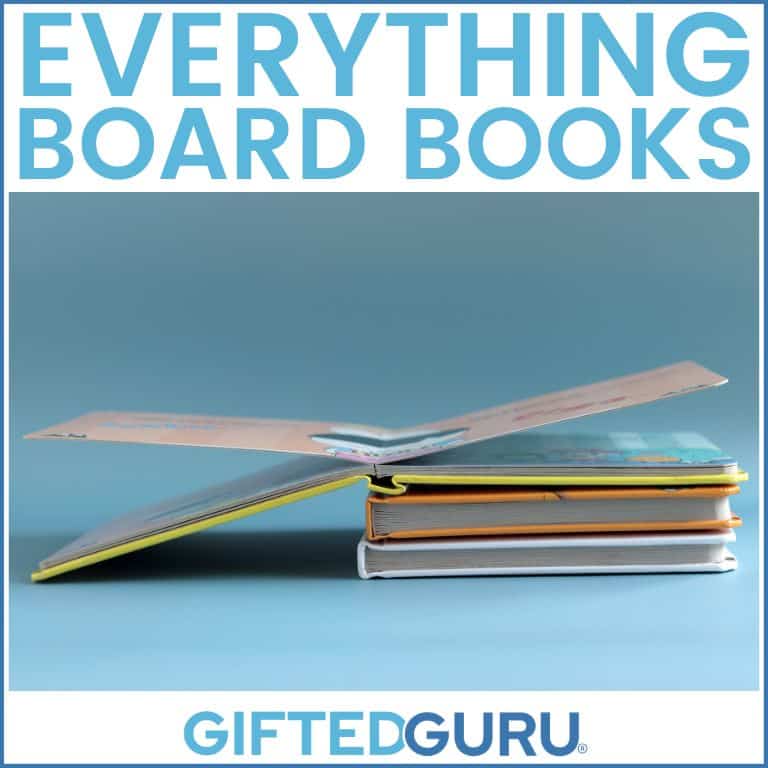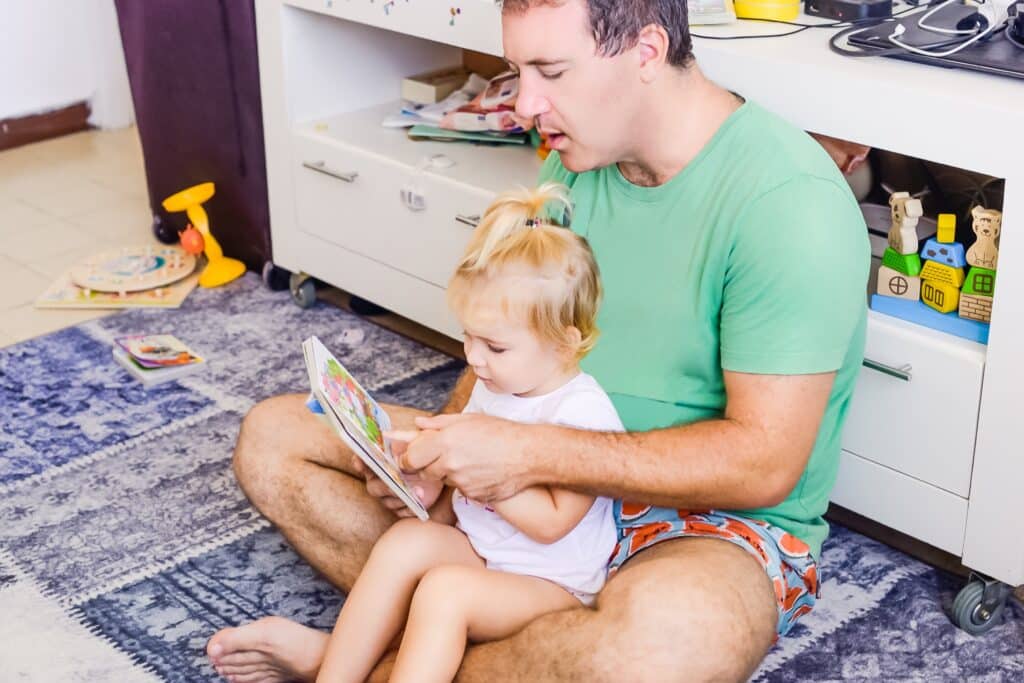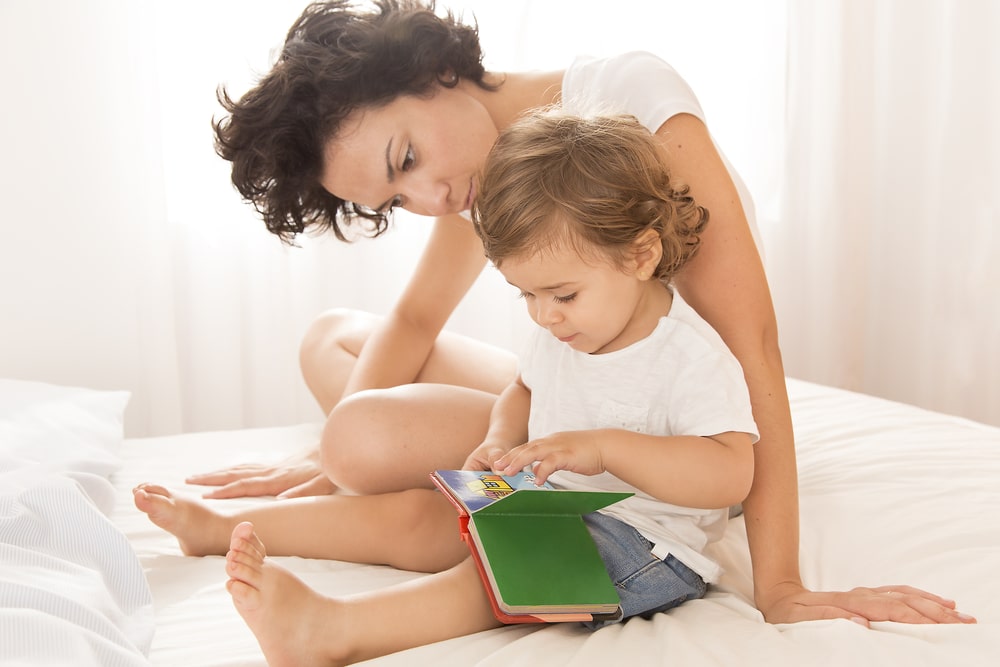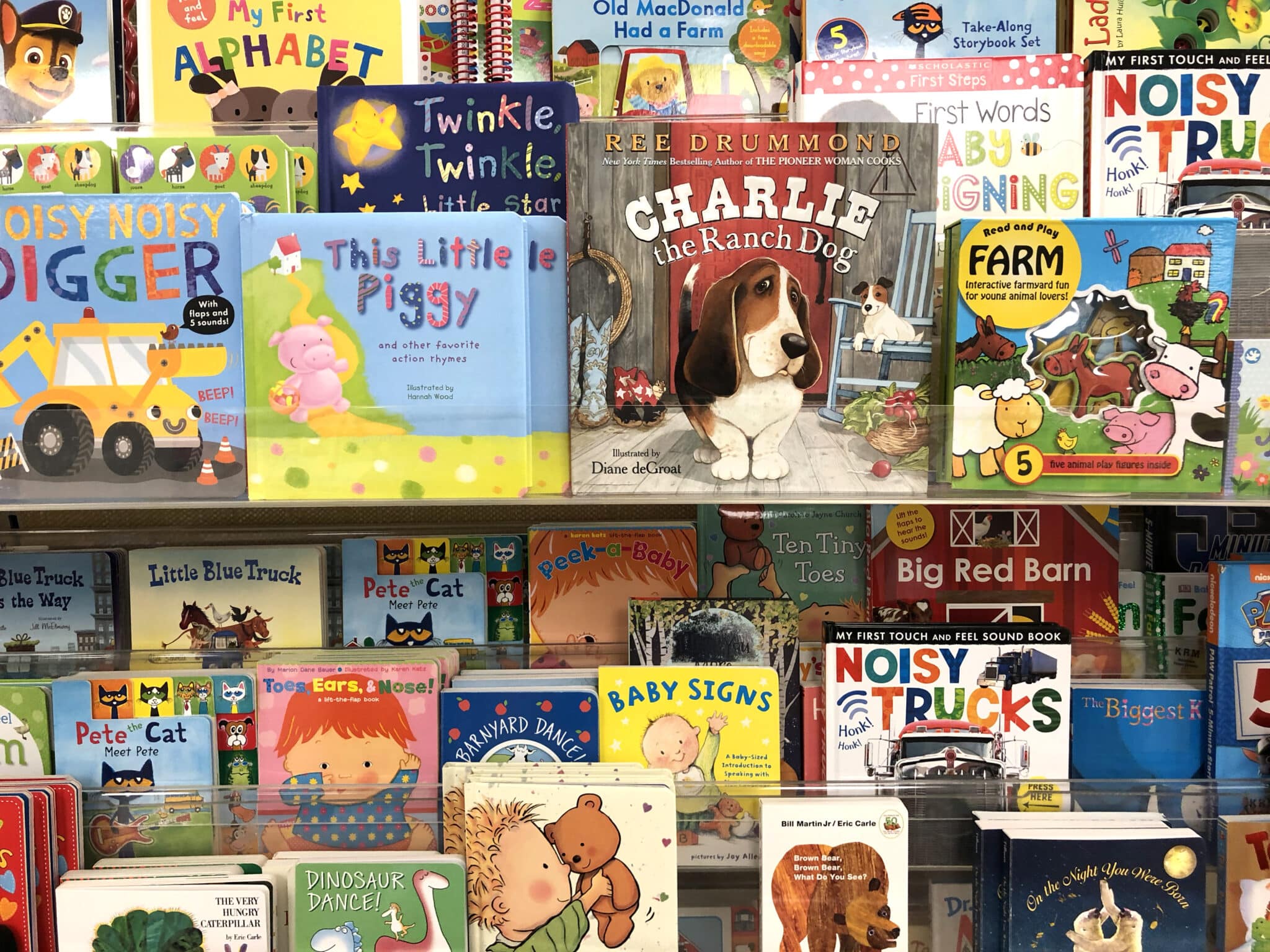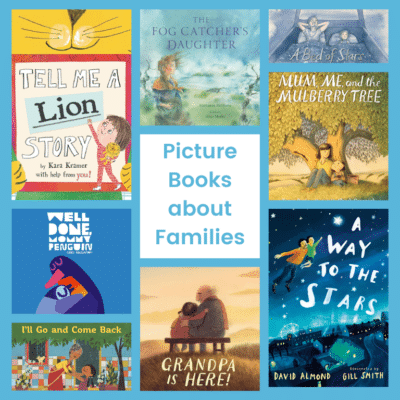Board books are an important tool for young readers because they are specifically designed for young children who are just forming their understanding of the joy of reading and books. If you’re a new parent or grandparent, you may be entering the wonderful world of board books. As a gifted education specialist, I love sharing the magic of board books because they are the gateway to reading.
In this article, I’m sharing everything you need to know about board books!
WHAT ARE BOARD BOOKS?
Board books are small, durable books made of thick cardboard pages. They are easy for small hands to turn and can withstand the rough handling that young children often give to their books.
It’s much better to allow children access to books made specifically for them than to correct them for damaging books beyond their care skills.
Board books also tend to have simple, repetitive text and bright, bold illustrations, making them engaging and accessible to young children. Additionally, because they are so durable, board books can be used over and over again, which makes them a cost-effective choice for parents and caregivers.
4 IMPORTANT PURPOSES OF BOARD BOOKS:
- They help to develop early literacy skills: Reading board books with young children helps to introduce them to the concept of reading and to build their vocabulary and language skills. The simple text and illustrations in board books can help children to make connections between words and their meanings, and to learn how to follow a story.
- They promote a love of reading: Reading board books with young children can be a fun and enjoyable activity for both the child and the adult. By reading board books with young children, parents and caregivers can help to foster a love of reading in their children and to establish reading as a regular part of their daily routine.
- They are convenient and portable: Board books are small and lightweight, making them easy to take on the go. They are a great choice for parents and caregivers who want to keep their young children entertained while travelling or running errands without the use of devices. [Side note: Children under four do not need or benefit from ANY use of devices with the exception of looking at photos or video calls with family.]
- They are durable: As mentioned earlier, board books are made of thick, durable cardboard pages that can withstand rough handling. This makes them a good choice for young children who may not yet have the fine motor skills or control to handle paper pages without tearing or damaging them, much to the horror of adults who spent good money on those books!
WHAT AGES ARE BOARD BOOKS FOR?
Board books are specifically designed for young children who are pre-readers. They are typically recommended for children ages 0 to 3, although some board books may be suitable for slightly older children.
Board books are a good choice for children in this age range because they are more durable (as mentioned already). They are also short, which is perfect for the attention spans of very young children.
HOW TO CHOOSE A BOARD BOOK:
Age-appropriateness: It’s important to choose a board book that is appropriate for the child’s age and development level. Look for books with simple, repetitive text and bright, bold illustrations that will hold the child’s attention. There’s a move towards making adult books like Pride and Prejudice into board books, but I don’t recommend this. The themes are beyond reach, and they’re blurring the true purpose and genius of board books.
Durability: As mentioned earlier, board books are made of thick, durable cardboard pages that can withstand rough handling. Be sure to choose a book with sturdy pages that will not tear or become damaged easily. Not all board books are created equally, so look at reviews to see what others have said about durability. Also consider how you will use the book. A bedtime story doesn’t need to be as durable as a board book that’s going to live in the diaper bag.
Size and weight: Look for a book that is easy for small hands to hold and carry. A book that is too heavy or large may be difficult for a young child to handle. If you’re buying online, look at the dimensions. It’s okay for a board book to be large if it’s one you’ll be reading to the child.
Content: Choose a book with content that is interesting and engaging for the child. Look for books with characters or themes that the child is familiar with and enjoys. Got a dinosaur lover? An animal lover? A truck lover? Choose books that align with a child’s interests.
Language: If the child is learning a second language, look for board books that are available in that language. Reading board books in a second language can be a fun and effective way to expose children to new vocabulary and phrases. Optimally, you’d get a board book that was available in both languages or was written in both languages in the same book.
Illustrations: Look for books with bright, bold illustrations that will capture the child’s attention. Illustrations can help to support the text and provide additional context for young readers. I prefer clean, clear illustrations where cows look like cows and shapes look like what they are to avoid confusion during language acquisition. Sometimes, art and language development aren’t aligned, so beware!
THINGS TO AVOID WHEN SELECTING BOARD BOOKS FOR YOUNG CHILDREN:
While it seems like all board books should be perfect for young readers (isn’t that the point???), it’s not the case. Here are some things to avoid when choosing a board book for the young readers in your life.
Books with small or fragile parts: Avoid books with small or fragile parts, such as pop-ups or movable pieces, as these may break or become lost easily. If you are going to read the cook to the child, great, but just know that the flaps will break. Interactive touch-and-feel books may be a better choice than pop-ups or flaps if you are looking for durability. Even young children don’t like broken things, so a book with the flaps torn off will quickly lose its appeal.
Books with overly complex content: Young children have short attention spans and may not be ready for long, complex stories. Avoid books with text that is too long or difficult for the child to understand. Personally, I include fonts in this. I look for board books with good, well-designed fonts.
Books with inappropriate content: Choose books that are appropriate for the child’s age and development level. Avoid books with themes or content that may be disturbing or confusing for young children. I’m constantly amazed at the content in some board books. They’re for babies and toddlers! (See my discussion of adult-like books above.)
Books with poor quality illustrations: Avoid books with poorly designed or executed illustrations. Poor quality illustrations can be confusing or uninteresting for young children. Illustrations that make familiar shapes unfamiliar are not helpful. You’re trying to teach children what a tiger looks like, so if the book has a tiger that isn’t recognizable as a tiger, you’re defeating the purpose. Overly stylized illustrations are not ideal.
Books with poorly written text: Avoid books with text that is poorly written or that does not flow well. Poorly written text can be difficult for young children to follow and may not hold their attention. Read the book out loud before buying it. After all, you will be reading the book aloud! Make sure the language flows and that it makes sense. Just because something got published doesn’t mean it’s worth buying.
THE BEST-SELLING BOARD BOOKS OF ALL TIME:
It is difficult to determine the most popular board books of all time, as popularity can vary based on factors such as the time period, geographical location, and personal preferences of the reader.
There are also books that began as board books, but often it’s a popular picture book that’s been released in board book format. That blurs the lines.
Acknowledging all of this, here are a few board books I think belong in every board book library (These are affiliate links to books I have purchased with my own allowance. If you buy through the link, it won’t cost you anything extra, but I may get a few cents so I can buy more books):
The Very Hungry Caterpillar by Eric Carle: This classic board book tells the story of a hungry caterpillar who eats his way through a variety of foods before emerging as a beautiful butterfly.
Goodnight Moon by Margaret Wise Brown: This beloved bedtime story follows a young bunny as it says goodnight to all of the objects in its room.
Little Blue Truck by Alice Shertle: This favorite is about a small truck named Blue who helps a group of animals out of the mud and teaches them the importance of perseverance and helping others.
Brown Bear, Brown Bear, What Do You See? By Bill Martin, Jr.: In this book, a series of animals asks the question “What do you see?” to each other, with each animal seeing and describing the next animal in the sequence.
Guess How Much I Love You by Sam McBratney: A young rabbit named Little Nutbrown Hare tries to express to his father, Big Nutbrown Hare, how much he loves him.
The Going to Bed Book by Sandra Boynton: This perfect bedtime read is about a group of animal friends who are getting ready for bed, including brushing teeth, taking a bath, and putting on pajamas.
There are so many wonderful board books! If you want to see a larger collection, you can visit my curated Amazon page to find a wide selection.
Do you ever wonder if people really buy the things they recommend? I do. So I thought I’d share a screenshot from my Amazon account showing that I actually buy these books! This one was purchased as a baby gift, and that’s a tip, too. Board books make excellent baby shower gifts! Stock up when they’re on sale, and you’ll always be ready.
BEST PLACES TO FIND BOARD BOOKS:
The short answer is a book store, but I think you’re looking for more direction than that! Finding board books involves thinking of what books you want and finding actual books. Here are my suggestions:
- Library: Your local library is a great place to find board books for young children. Libraries often have a section specifically for board books, and you can borrow them for free. Because board books can be pricey, I recommend checking out books from the library BEFORE buying them. That way you know if the book is one the child will enjoy (and you’ll be willing to read over and over and over and over again).
- Friends: Ask friends for recommendations. A simple post to your social media accounts will yield recommendations. If you have friends with children the same age, consider a board book swap to keep your inventory fresh. Board books are easily cleaned, so you can share stories without sharing germs.
- Local bookstores: Many local bookstores have a selection of board books for young children. You can often find a wide variety of titles, as well as recommendations from bookstore staff. If you can, visit your local independent bookseller. Use the site Indiebound to locate an independent bookseller near you. Used bookstores are great for board books. If the book has held up in someone else’s house, it’s likely it will stand the test of your children, too. Hopefully. Fingers crossed.
- Online booksellers: There are many online booksellers, such as Amazon and Barnes & Noble, that offer a wide selection of board books for young children. You can often find discounted prices and free shipping options when shopping online. If you’re not in a hurry, independent bookstores allow you to order online as well.
- Book clubs: Some book clubs, such as Scholastic Book Clubs, offer a selection of board books for young children. You can often find discounted prices when purchasing through a book club. Check to see if you live near a Scholastic Book warehouse. They have great sales twice a year. They run the sales online, too, so poke around for board books there as well.
- Consignment and Garage sales: Consignment sales, such as those hosted by parenting groups or schools, are a great place to find gently used board books at discounted prices. Your library may have a book sale, as well. Garage sales can be the mother lode, but it’s hit-or-miss, so this one only works if you’re already at the sale and find a book. It’s not an efficient use of time to go to 100 garage sales hoping one has board books.
- Curated Lists: As I mentioned earlier, I curate a selection of board books on my Amazon page. Additionally, I post book reviews and suggestions, including board books, on YouTube and on my website.
WHAT’S THE DIFFERENCE BETWEEN A BOARD BOOK AND A HARDBACK BOOK?
There are several differences between a board book and a hardback book:
- Material: The most obvious difference between a board book and a hardback book is the material they are made of. Board books are made of thick cardboard pages, while hardback books have paper pages that are bound together and covered with a hard, protective cover. Board books have hard covers, but they also have hard pages.
- Size and weight: Board books are typically smaller and lighter than hardback books, making them easier for small hands to hold and carry.
- Durability: Because they are made of thick cardboard, board books are generally more durable than hardback books. They can withstand less-than-ideal living conditions and are less prone to damage.
- Age range: Board books are typically recommended for young children, ages 0 to 3, while hardback books are suitable for a wider range of ages.
- Cost: Board books are usually less expensive than hardback books, although that’s not always true and depends in large part upon where you buy them.
Overall, the main difference between a board book and a hardback book is the material they are made of and the age range they are intended for. Be careful, as some books come in both formats, and you want to make sure you get the format you were seeking.
HOW TO REPAIR A DAMAGED BOARD BOOK
If a board book has become damaged, there are a few things you can try to repair it:
- Use clear tape: If the cover or pages of the book have become torn, you can try using clear tape to repair them. Place the tape over the tear, making sure to smooth it down well so that it sticks properly. Scotch brand makes a specific clear tape called “book tape” that’s designed specifically for this purpose. Find it on Amazon (affiliate link).
- Use a glue stick: If the pages of the book have become separated from the spine, you can try using a glue stick to reattach them. Place a small amount of glue along the spine of the page, and then carefully press it back into place. Be sure to clamp it or press it until thoroughly dry.
Use a binding repair kit: If the spine of the book has become damaged or the pages have become separated from the spine, you can try using a binding repair kit to fix the book. These kits usually include glue and instructions for repairing the binding of the book.
Overall, the best way to repair a board book will depend on the extent of the damage and your own comfort level with repairing books. You can get really good at it, though, and board books cost enough that learning to fix them is worth your time.
YOU’RE A BOARD BOOK EXPERT:
Board books are an important resource for young readers because they provide a safe and engaging introduction to the world of reading. Hopefully, you’ve found some of these suggestions helpful.
I’m officially declaring you a board book expert! You know what their purpose is, what to look for, some suggestions for titles, what to avoid, how to fix them, and more!
I wish you many, many hours of enjoyment sharing the love of reading with the young readers in your life.

